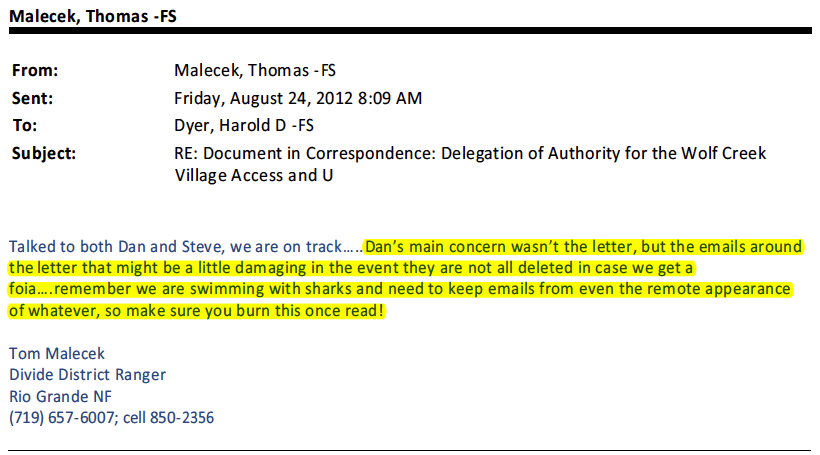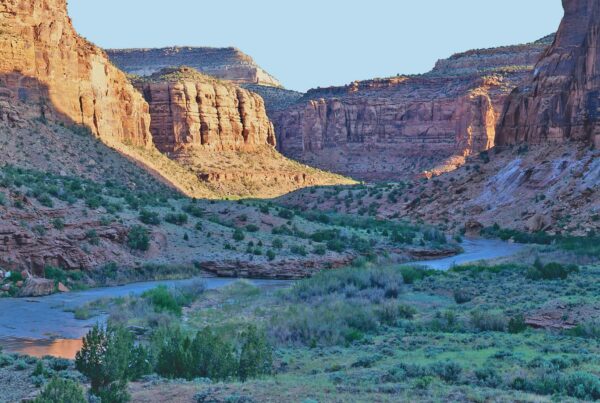This is the first in our Wolf Creek Files blog series. Each post will explain, in detail, the context behind an email or string of emails: who is writing, what is being discussed, and why it concerns us.
WHO:
- Tom Malecek, District Ranger, Divide Ranger District, Rio Grande National
Forest Project Manager for the Wolf Creek Environmental Impact Statement (EIS)* - Dan Dallas, Forest Supervisor, Rio Grande National Forest
Decision maker who oversaw the EIS process - Harold Dyer, Forest Planner, Rio Grande National Forest
Allowed the EIS for Wolf Creek to violate the Forest Plan for the Rio Grande National Forest. **
WHAT:
This email is in response to Forest Service employees voicing concerns that a certain letter could make it look like they made their decision for the Wolf Creek land exchange before they completed the environmental analysis (which is unlawful). See the full email chain here.
WHY:
District Ranger Malecek’s last email (above) provides rare insight into the Forest Service’s practice of destroying potentially incriminating records before requested by the public through a Freedom of Information Act request (FOIA)***: “we… need to keep emails from even the remote appearance of whatever, so make sure you burn this once read!” The email also shows contempt for public review, calling the public review process “swimming with sharks.”
This email was withheld from the public after two separate FOIA requests, and was only received as part of the court case filed by the Friends of Wolf Creek against the Forest Service for the decision to allow the land exchange that would enable the “Village at Wolf Creek” development. Similar emails were disclosed in 2006 Wolf Creek FOIA litigation, which lead to the withdrawal of a previous EIS and decision, forcing the Forest Service to start over.



